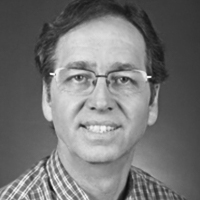This text-based course is a transcript of the live seminar, “Childhood Apraxia of Speech (CAS): Defining the territory”, presented by Peter Flipsen, Ph.D. Jr. S-LP(C), CCC-SLP.
>> Peter Flipsen: The reason I called this course “Defining the Territory” is that although this week's conference is really about treatment of childhood apraxia, this first session that I am going to be doing is really more about differential diagnosis. That is my focus today. So it sort of defines the territory and sets the stage for what is to come for the rest of the week. I do not expect to do more than literally dip my baby toe into the waters of treatment at the very end of my presentation. I will just make a couple of very minor comments, but this is really setting things up for subsequent presentations. With that said, this seminar is intended to stand alone.
Childhood Apraxia of Speech
This term may not be particularly new to most of you; although it may be new to some. This is a disorder that has gone by many labels over the years, including four I have listed here: developmental apraxia, developmental dyspraxia, developmental verbal dyspraxia, and childhood verbal apraxia. Childhood apraxia of speech or CAS is actually ASHA’s current preferred term. The idea behind this particular term is that it provides a parallel to the adult form, which we will talk about as apraxia of speech or AOS. It also helps to avoid some problems that we have had in the past with the term ‘developmental.’ That has posed some challenges for some insurance companies. For example saying that if it is developmental that means the child is just going to grow out of it and we are not going to have to do anything with it or the child or saying that if it is developmental that means the schools can take care, we do not actually have to cover it. It has created some challenges for access to services sometimes. Calling it childhood apraxia gets us around that. Adding the adverbial “of speech” points out that speech is the primary issue. We will talk a little bit about the ‘speech’ versus ‘oral’ question as we go through this.
Childhood apraxia of speech falls into the broad category of what we now like to refer to as speech sound disorders. Many of you probably were trained to talk about articulation disorders or phonological disorders or maybe some compound of those two: articulation and phonological disorders. Childhood apraxia of speech does fit into this broad category that includes what we now think of as articulation disorders or phonetic disorders. Disorders that involve the motor aspects or the physical aspects of production as well as phonological disorders or sometimes called phonemic disorders, which are more about the children understanding how sounds fit into the sound system and how sounds are used within the language. We have tended to make that separation. We still do to a large extent. We are now sort of subsuming those as well as childhood apraxia and a couple of other things in the broad category of speech sound disorders. Today we are talking about a subcategory within speech sound disorders.
CAS – The Controversy
The notion of childhood apraxia of speech has been, in its various forms with its various labels, around for quite a while and it has led to considerable controversy until very recently. The controversy arises for a number of reasons. The biggest controversy - and I still do occasionally run into people who could challenge whether or not childhood apraxia actually even exists - is there such a thing? Part of the problem with this particular category is in its very existence. The question of its very existence arises from a number of subsequent questions that I have listed below:

